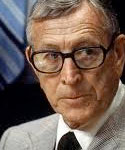 Leaders are often exhorted to view the “big picture” – to set a vision, craft a strategy and inspire the troops to follow where they bravely go. This is the glamorous – and important – aspect of attaining higher levels of organizational responsibility. Yet, it’s interesting to note that many of the best leaders are facile and expert in dealing with both the big picture and the details. Yes, seeing the big picture is mandatory for success as a leader, and this is a perspective that many less-experienced managers need to learn. However, time and again it is shown that the most effective leaders are those who can set the vision and influence others while also diving into the details when needed.  I was recently reminded of this while reading leadership lessons from Lyndon Baines Johnson’s presidency. After President John F. Kennedy’s death, Johnson used his expertise as the seasoned Senate majority leader to push through Kennedy’s legislative agenda. Johnson clarified Kennedy’s initiatives, turned them into “martyr’s causes” and successfully transformed them into law. Without his exceptional knowledge of and influence in the congress, Johnson would not have been successful. It was Johnson’s mix of big picture vision and his detailed expertise in Washington politics that made it all work.  Another example of a leader who combined vision and details is John Wooden, the legendary basketball coach. At the beginning of each season, he gathered his team members together to teach them how to put on their socks. Yes, he actually demonstrated how to smoothly roll up socks over the foot. You see, he knew that improperly worn socks could create blisters, and that blisters could sideline his best players. Wooden’s attention to the details – and how much more detailed can you get than how to put on socks? – Along with his vision, strategy and inspiration created the most successful basketball teams in history. What does this mean for organizational leaders today? Let’s be clear: It does not give a manager carte blanche to micro-manage her employees, nor does it mean that the leader must learn every detail of his operations. Many of the details can be delegated to others. What leaders today must do is learn what both their customers and employees want and need, and use that knowledge to make decisions and shape strategy. A leader who is unaware of the sentiments of the organization’s stakeholders and is unaware of company operations is in danger of making decisions that may be aligned with the strategy but unfit for the particularities of the organization. This is a blindness that plagues many executives today – being unaware of the day-to-day concerns of employees and customers. The needed combination of detail-orientation and big picture perspective is a good reason for promoting employees from within an organization to positions of leadership. Existing high potential employees already know the details of the operation and its customers, and only need to hone their big picture skills, which can be aided by the skills of an executive coach or mentor. On the other hand, there are times when outside blood can be very useful to an organization. The externally hired executive should take care to learn about his new organization. In assuming a new position, a good leader will invest time to learn about the organization by interviewing both employees and customers. Studying employee and customer satisfaction survey results is a good way to start, but subsequent personal interviews provide nuance and details that are missing in survey reports. Use open-ended questions that aim to reveal both the positive qualities of the organization and the issues that need improvement. Customers and employees will be honored and impressed by the attention you give them, providing you needed emotional capital to make your future vision a reality. The best leaders that I know aren’t afraid to roll up their sleeves and get into the weeds with their employees. They walk the halls, listen and talk to people, visit clients and ask questions with open curiosity. At the same time, they strictly guard their planning and strategy time, and insist that their direct reports likewise take time to plan and review. It is in juggling the big picture with the details – and knowing when to do each thing – that you too will be successful.
0 Comments
Leave a Reply. |
From the desk of
|
Our services |
Our Company |

 RSS Feed
RSS Feed

